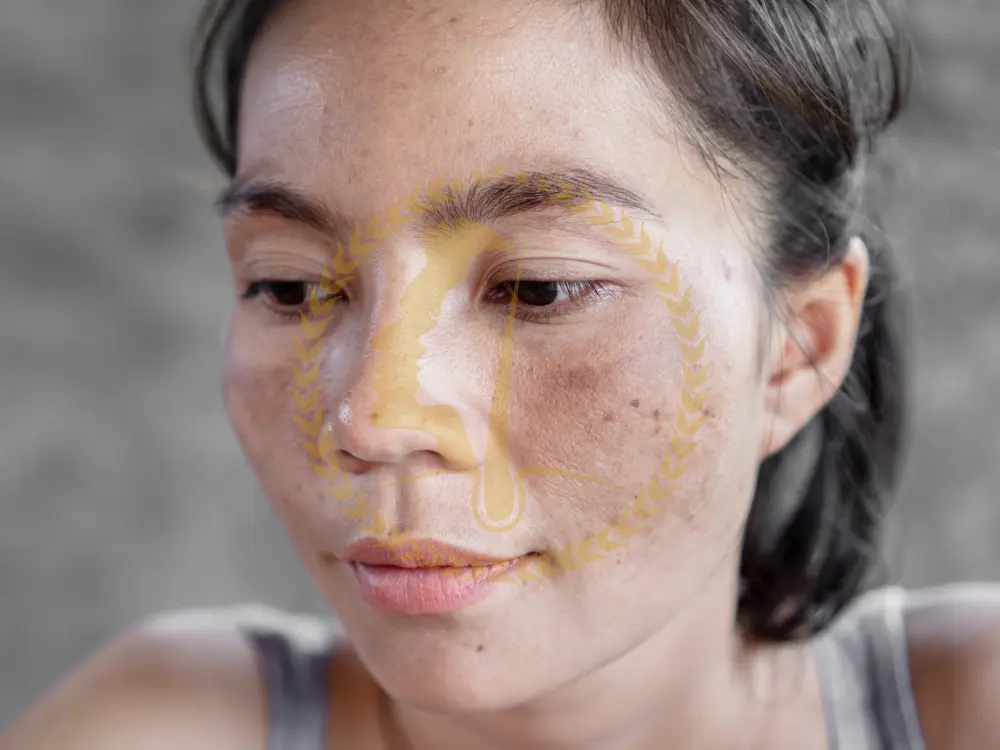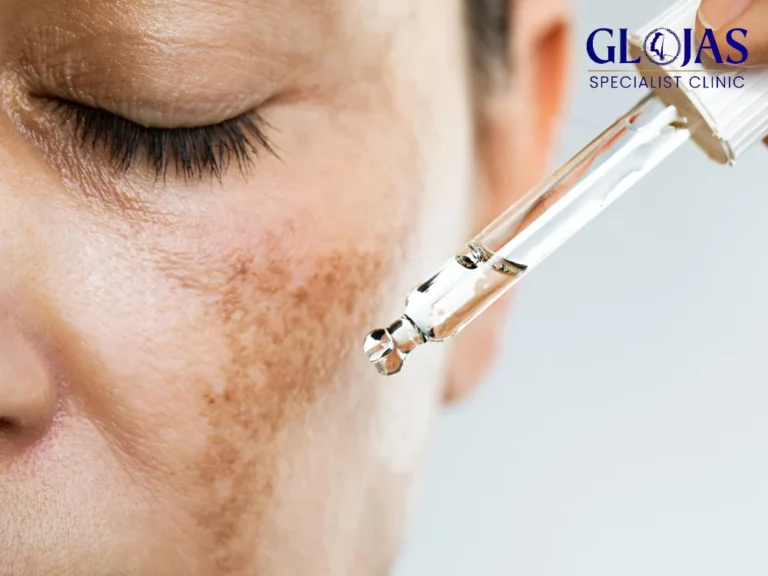Hyperpigmentation is a common skin condition where parts of the skin become darker than the surrounding area. This happens when the skin produces too much melanin, the pigment that gives skin its color.
While hyperpigmentation is usually harmless, it can cause uneven skin tone and affect confidence. The good news is that it can be treated and prevented with the right care.
What Is Hyperpigmentation?
Hyperpigmentation occurs when melanin is overproduced in certain areas of the skin. This leads to dark spots, patches, or overall skin darkening.
It commonly appears on the face, neck, hands, and other sun-exposed areas. The most common types include sunspots, melasma, and post-inflammatory hyperpigmentation (PIH).
Common Causes of Hyperpigmentation

Hyperpigmentation can develop for several reasons. Below are the most common causes.
1. Sun Exposure (UV Radiation)
How it happens:
UV rays trigger melanin production as a natural defense. Over time, this leads to sunspots or age spots.
Common areas:
Face, arms, shoulders, and hands.
Prevention:
Use a broad-spectrum sunscreen SPF 30 or higher every day, even when indoors or on cloudy days.
2. Hormonal Changes (Melasma)
What is melasma?
Melasma causes dark patches on the face, especially the cheeks, forehead, and upper lip. It is common during pregnancy or when using birth control pills.
Treatment options:
Topical lightening creams
Chemical peels
Laser treatments like Pico Laser
Strict sun protection
3. Post-Inflammatory Hyperpigmentation (PIH)
What is PIH?
PIH appears after skin injury or inflammation such as acne, eczema, burns, or insect bites.
Prevention tips:
Avoid picking acne and treat inflammation early with gentle skincare.
4. Medications and Chemical Exposure
Some medications increase sun sensitivity, which can lead to hyperpigmentation.
Important:
Always consult a doctor if pigmentation appears after starting new medication.
5. Genetics and Skin Type
People with darker skin tones are more prone to hyperpigmentation, especially melasma and PIH. Genetics can increase melanin activity in the skin.
Types of Hyperpigmentation
Understanding the type of hyperpigmentation helps determine the best treatment.
1. Sunspots (Age Spots)
Flat brown or black spots caused by long-term sun exposure. They are more common after age 40.
2. Melasma
Large, uneven dark patches on the face. Often linked to hormones and sun exposure.
3. Freckles
Small brown spots that darken with sun exposure. More common in lighter skin tones.
4. Post-Inflammatory Hyperpigmentation (PIH)
Dark marks left after acne, wounds, or skin irritation.
Treatment Options for Hyperpigmentation
Treatment depends on the cause, depth, and skin type.
1. Topical Treatments
These are often the first line of treatment.
Hydroquinone: Reduces melanin production
Vitamin C: Brightens skin and evens tone
Niacinamide: Fades dark spots and improves skin barrier
Retinoids: Increase cell turnover
Alpha Arbutin: Gentle alternative for pigmentation control
2. Chemical Peels
Chemical peels remove damaged outer skin layers.
Common acids include:
Glycolic acid
Salicylic acid
They help fade dark spots and improve skin texture.
3. Laser Treatments
Laser treatments target melanin directly.
Fractional Laser: Improves pigmentation and skin texture
Q-Switched Laser: Breaks down excess melanin deep in the skin
These treatments should be performed by trained professionals.
4. Microneedling
Microneedling creates tiny micro-channels in the skin. This boosts collagen and helps fade pigmentation over time.
5. Sun Protection (Most Important)
Without sun protection, treatments will not work.
Apply SPF 30+ sunscreen daily
Reapply every 2–3 hours outdoors
Wear hats, sunglasses, and UV-protective clothing
How to Prevent Hyperpigmentation
You can reduce the risk with simple daily habits.
Use sunscreen every morning
Avoid peak sun hours (10 a.m. – 4 p.m.)
Treat acne early
Use gentle skincare products
Avoid harsh scrubs and over-exfoliation
GLOJAS Specialist Clinic is led by experienced medical professionals providing evidence-based care for hyperpigmentation, using clinically proven treatments, advanced technology, and personalised skin assessments to ensure safe, effective, and ethically guided aesthetic outcomes.
Is Hyperpigmentation Dangerous?
Hyperpigmentation is usually not dangerous. However, sudden or unusual changes in skin color, size, or shape should be checked by a dermatologist to rule out serious conditions like melanoma.
Frequently Asked Questions About Hyperpigmentation
1. Can hyperpigmentation be cured?
There is no permanent cure, but it can be effectively treated and controlled.
2. How long does treatment take?
Topical treatments may take 4–6 weeks, while lasers and peels may show results in 2–3 weeks.
3. Can dark spots fade naturally?
Some mild pigmentation may fade over time, but results are slower without treatment.
4. Does hyperpigmentation go away on its own?
Sun-related pigmentation may fade. Melasma and PIH usually need treatment.
5. Is hyperpigmentation more common in dark skin?
Yes. Darker skin types produce more melanin and are more prone to PIH and melasma.
Conclusion
Hyperpigmentation is a common skin concern caused by excess melanin. Sun exposure, hormones, acne, and skin injury are the main triggers.
With proper treatment, sun protection, and consistent skincare, hyperpigmentation can be significantly improved. Early treatment gives the best results.
Next Steps
If hyperpigmentation is affecting your skin, consult a qualified skin professional. A personalized treatment plan can help restore an even, brighter skin tone safely and effectively.
